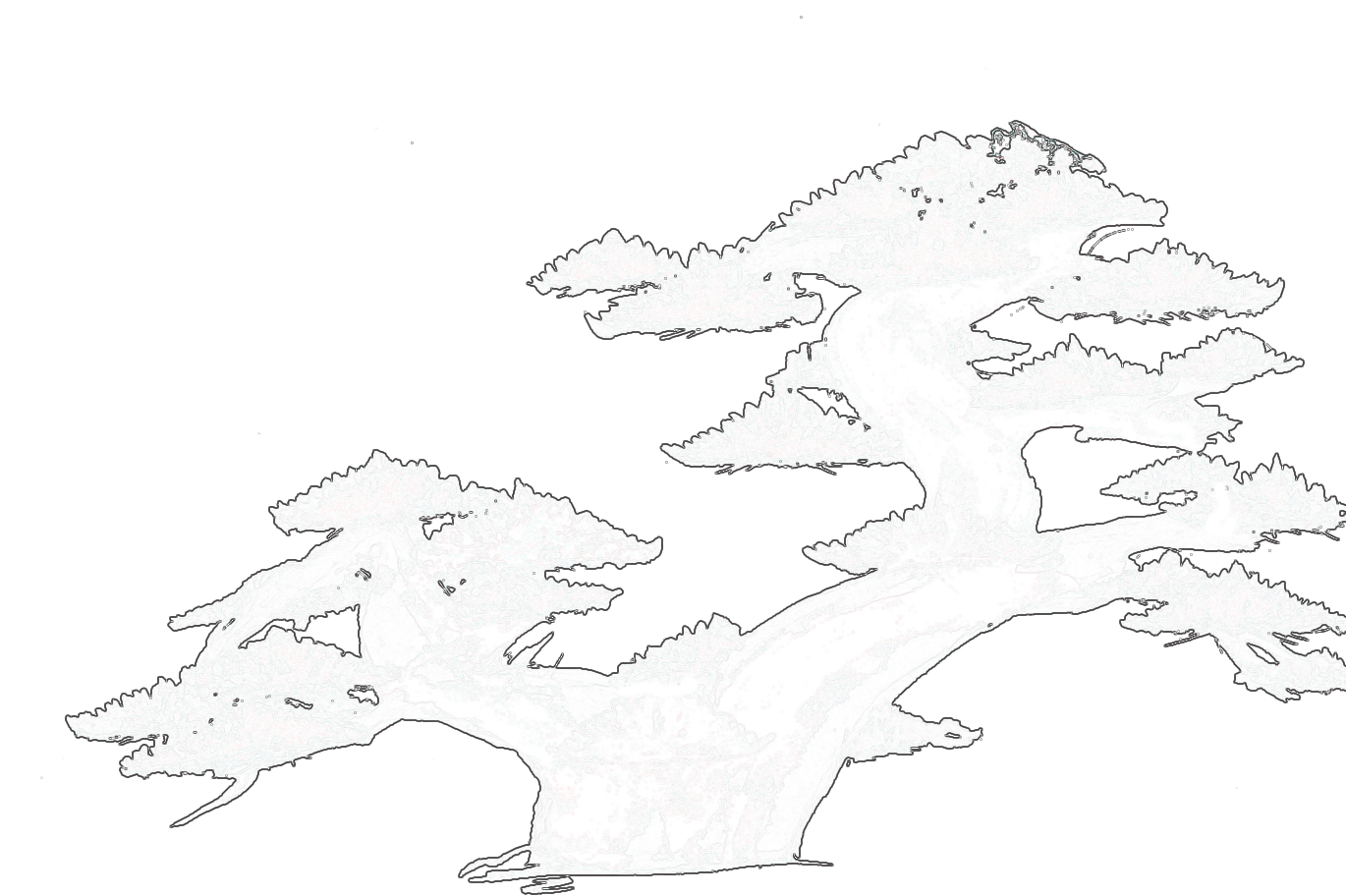Aioi: leaves laden with words
Anna Murray
The pine tree is the symbol of Noh.
Every noh stage – otherwise devoid of props or scenery – is adorned only by a large pine painted on its back ‘wall’. This panel is known as a 鏡板 – kagami-ita, or ‘mirror-board’.
The performance, a reflection of the real world, manifests in front of this pine.
The pine, evergreen and said to live for a long time (and is often referred to in Japanese poetry as Chitose, thousand years), gathered further symbolic meaning. primarily representing longevity, both of life and art. It also represents duality – or more properly, liminality, the space between a number of dualities. It is the point between the eternal and spiritual, where the gods manifest in the world.
It is evergreen – constant and unchanging, representing long life; but the ever-present carpet of fallen needles embodies change, mutability and death. It is both sentient and insentient; its sounds are external, those of the wind in its leaves, but also the communication of kami. Its longevity links the past and present.
The sounds of the two drums (called kotsuzumi and otsuzumi) in the music of noh represent a similar liminality.
Between the beats of these drums the players emit 掛け声 – kakegoe, shouts or calls. These shouts are part of the rhythmic texture, always occurring on specific beats within the rhythmic cells that constitute the music of noh; but more so they echo the emotional content of the play. In a moment of stillness they can be a simple sigh, the drawn-out moan of quiet anguish, or the fast, rousing cries of battle.
These calls are punctuated by the sharp, loud, echoing hits of the drums. Through their relationship with these shot-like drum beats, the kakegoe too take on a symbolic role (sometimes likened to the katsu calls of Zen practice: the contrast between the unearthly calls and the sudden drum hits emphasise the empty space between, the echoing silences.
The kakegoe are an expression of the absent, and of yugen – the hidden beauty of what lies beneath the surface, the unseen world. They invite us to the consideration of that other world, while the shock of the drum beat returns us to the tangible universe in a constant back and forth.
Front Cover | Introduction | On Quiet Music | Aioi | AOBAU | Moon Phases




